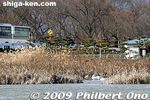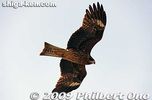 Image search results - "bio" Image search results - "bio" |

Waste vegetable oil collection box sign.
|
|

One supermarket in Date, Hokkaido which has a waste vegetable oil collection box.
|
|

Near the entrance of the supermarket is the waste vegetable oil collection box.
|
|

Waste vegetable oil collection box with a few plastic bottles of waste oil left by customers.
|
|

A worker from Date Cosmos 21 comes to collect the waste oil.
|
|

Other waste oil containers.
|
|

This small building next to the Date Cosmos 21 Center is a waste oil conversion plant.
|
|

Waste oil tanks, each holding 1000 liters. The waste oil is first filtered.
|
|

The waste oil is fed to the conversion plant.
|
|

Through a chemical process, the waste oil is converted to biodiesel fuel.
|
|

Glycerine is removed from the waste oil.
|
|

The biodiesel fuel goes into this barrel.
|
|

The plant's control panel.
|
|

Bottles showing the waste oil conversion process from left to right.
|
|

Biodiesel fuel tank connected to a gas pump.
|
|

Filling up the gas tank with biodiesel fuel.
|
|

The non-toxic auto exhaust smells like tempura.
|
|

Sign explaining about Hayasaki (Hayazaki) Naiko Biotope. It was an attached lake to Lake Biwa until it was filled in as reclaimed land in 1970.
|
|

A number of attached lakes in Shiga were reclaimed to make rice paddies amid a shortage of food after the war. This has proven to be detrimental to Lake Biwa's ecology, and now Shiga wants to restore Hayasaki's reclaimed land back to an attached
|
|

In Nov. 2001, part of the land was flooded with water as an experiment, and the ensuing plant and wildlife were observed. MAP
|
|

This area seen here has been flooded with water as part of the biotope. Reed beds now flourish. Mt. Ibuki is in the background. These pictures were taken in Feb.
|
|

Mt. Ibuki
|
|

Where there are reeds, there is life.
|
|

In winter, migratory birds come to Hayasaki Naiko Biotope.
|
|

Reeds oin a flooded part of the Hayasaki Naiko Biotope.
|
|

This is where kids can play in the water and catch fish, etc. After observing and identifying the fish, prawns, etc., the kids return the fish back into the water. Fishing is prohibited here.
|
|

For demonstrative purposes, an arrow-shaped "eri" fish trap was recently built in the biotope. It is similar to the ones found in Lake Biwa. It leads fish swimming along the fence into a small area where they can be caught.
|
|
|

At the end of the arrow tip is where the fish eventually gather so fisherman can just scoop up the fish. The fish don't backtrack and so they don't escape this place.
|
|

Looks like a prime place for fish and birds to dwell.
|
|

Reeds and Mt. Ibuki
|
|

Migratory birds in Feb.
|
|

Ducks seek the protection of the reeds.
|
|

Meanwhile above, a black kite soars above looking for fish. The bird is a common site at Lake Biwa.
|
|

In summer. Looking at the Hayasaki Naiko reclaimed land from the southern edge with Yamamoto-yama in the distance. This part is not yet flooded and still remains as rice paddies..
|
|

Hayasaki Naiko biotope is still largely rice paddies. For decades since 1970, rice farmers had to toil extra hard due to the water level being lower than Lake Biwa's. The paddy soil is extra watery and soft. Water has to be pumped out constantly.
|
|

Water intake pumping station. The water drainage pumping station is in another location.
|
|

This part was flooded in 2001, and it is now teeming with reeds, fish, and other wildlife which entered this wetland naturally over the years. A local NPO conducts tours and hands-on activities for kids and adults.
|
|

Reed beds abound in the southern portion of the biotope. Invasive species are also very minimal compared with Lake Biwa.
|
|

Reeds are vital for fish and birds. They can spawn or nest here and hide from predators. Reeds also function as a water purifier. Lake Biwa has lost much of its reed beds due to development.
|
|

Chonoki River cuts through the biotope. Looking upstream. 丁野木川
|
|

Chonoki River looking downstream toward Lake Biwa. This river divides the Hayasaki biotope into the northern and southern areas.
|
|

On the northern area, is this flooded area. Less reeds than in the southern area. This area is more suited for migratory birds like swans which come here each winter. This place is popular with bird watchers and wildlife photographers in winter.
|
|

Northern area of Hayasaki biotope. Hayasaki naiko has an area of 17 hectares. About one-fourth of this has been flooded on an experimental basis. The flooded paddies are leased to Shiga Prefecture which pays rent to the land owners.
|
|

On the right of the flooded section are rice paddies not yet flooded. Shiga wants to eventually purchase all the reclaimed land and flood the entire area to restore Hayasaki Naiko.
|
|

This is the eastern edge of Hayasaki Naiko. The original lake's edge was up to here. This stone wall is original, existing when Hayasaki Naiko was still an attached lake.
|
|

Houses in Hayasaki village faced the eastern shore of Hayasaki Naiko. When the restoration is completed, this road would have to be further elevated by 1 meter or so as an embankment.
|
|

What used to be a lake is a rice paddy. Imagine this to be a lake, with an embankment in front of these homes.
|
|

View of Hayasaki Naiko from the eastern edge. One stumbling block to the restoration is high land prices. Shiga needs to purchase all of the reclaimed land.
|
|

View of Hayasaki Naiko from the eastern edge. There is a committee for restoring Hayasaki Naiko, but reaching an agreement on planning and implementation takes a long time.
|
|

Rice paddy and reed bed. Special thanks to Makino Atsushi (Lake Biwa Museum) and Kurahashi Yoshihiro (Hayasaki Biotope Networking) for the tour of Hayasaki biotope.
|
|

Rice paddy and reed bed. Restoring Hayasaki Naiko may take decades. For tours (May-Nov.) of Hayasaki biotope, call in Japanese: 0749-72-2262 (Hayasaki Biotope Networking).
|
|
|
|